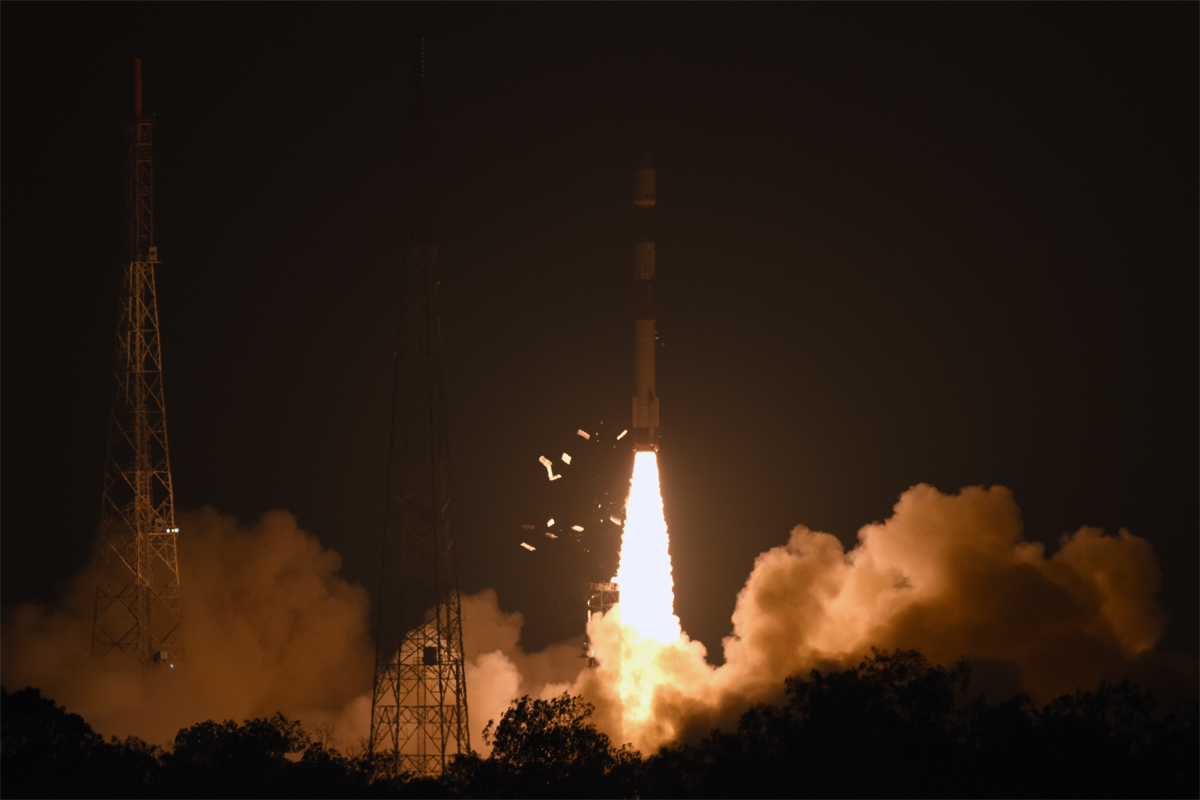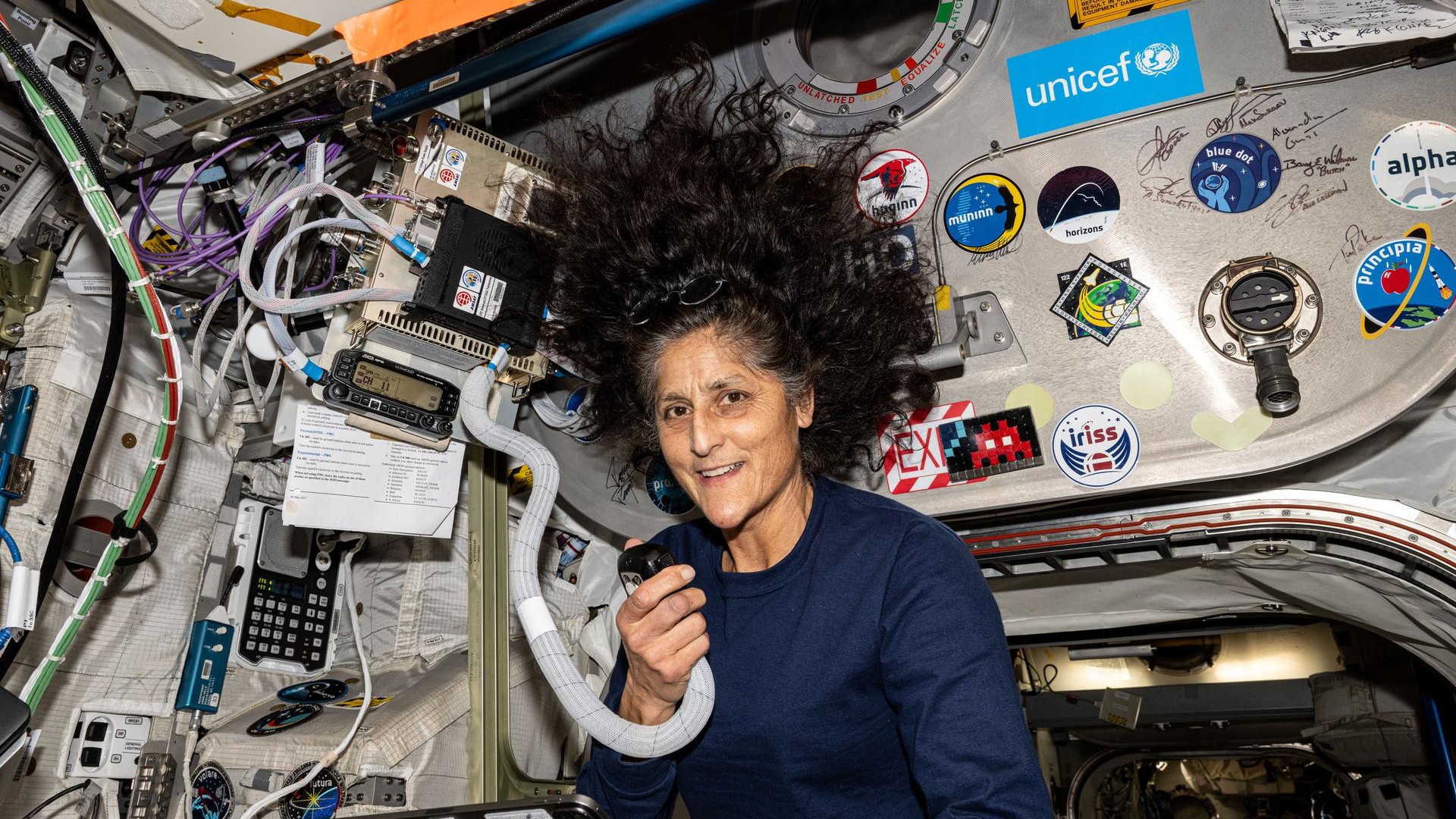India Successfully Launches RISAT-2B Earth-Observation Satellite
The radar imaging satellite is India's latest "eye in the sky."
India's space agency successfully launched a new Earth-observation satellite today (May 21), boosting the nation's space-based surveillance capabilities.
The Indian Space Research Organization (ISRO) used a Polar Satellite Launch Vehicle designated PSLV-C46 to launch its third radar imaging satellite, named RISAT-2B, from the Satish Dhawan Space Centre in Sriharikota, India. The rocket lifted off at 8 p.m. EDT (0000 GMT, or 5:30 a.m. local time on May 22) just as the sun began to rise over the Bay of Bengal.
Equipped with an X-band synthetic aperture radar, RISAT-2B will be able to look through the clouds to observe Earth's surface day and night. Imagery from RISAT-2B can be useful for civilian purposes like agriculture and disaster relief management, ISRO officials said in a description of the mission. But it will also be used for surveillance purposes.
Related: India's RISAT-2B Satellite Launch In Photos
According to The Times of India, RISAT-2B will watch over India's borders and the country's surrounding waters to monitor for foreign threats. For example, it will be able to provide views of jihadi terror camps in the Kashmir region, which has long been the subject of a territorial dispute between India and Pakistan. "The RISAT satellite can take images of a building or an object on the earth at least two to three times a day," an ISRO official told The Times of India.
RISAT-2B will provide detailed images of Earth's surface with a resolution of about 3.3 feet (1 meter) as it orbits the Earth at an altitude of 346 miles (557 kilometers). Its orbit, which is inclined 37 degrees to the equator, won't enable global surveillance. Rather, the satellite's gaze will be fixed on India and Pakistan.
RISAT-2B will be the third satellite in India's radar imaging satellite program. The first, RISAT-2, launched in 2009 (before RISAT-1) after India expedited its development in response to the 2008 Mumbai terror attacks. RISAT-2 "took priority over RISAT-1 because of the advanced radar system," and its launch was fast-tracked "to boost surveillance capabilities of security forces," The Times of India reported. That was India's first reconnaissance satellite, and RISAT-2B is intended to replace it.
Breaking space news, the latest updates on rocket launches, skywatching events and more!
In 2012, India launched its second radar imaging satellite, RISAT-1. That satellite was never meant to be used for surveillance purposes. Rather, its focus was on natural resources management like forestry and agriculture. Four years into its planned five-year life span, RISAT-1 was hit by orbital debris and was declared nonoperational shortly thereafter.
RISAT-2B is the first radar observation satellite India has launched since 2012, but it's also the first of at least four such satellites that ISRO plans to launch by the end of this year, according to Spaceflight Now. The next one will be the first in a new series of high-resolution optical surveillance satellites called Cartosat-3, and it is scheduled to launch sometime this summer.
- India Follows Anti-Satellite Missile Test with 29-Satellite Launch
- India Will Launch Its Own Astronauts to Space by 2022, Government Says
- India Launches Record-Breaking 104 Satellites on Single Rocket
Email Hanneke Weitering at hweitering@space.com or follow her @hannekescience. Follow us on Twitter @Spacedotcom and on Facebook.

Hanneke Weitering is a multimedia journalist in the Pacific Northwest reporting on the future of aviation at FutureFlight.aero and Aviation International News and was previously the Editor for Spaceflight and Astronomy news here at Space.com. As an editor with over 10 years of experience in science journalism she has previously written for Scholastic Classroom Magazines, MedPage Today and The Joint Institute for Computational Sciences at Oak Ridge National Laboratory. After studying physics at the University of Tennessee in her hometown of Knoxville, she earned her graduate degree in Science, Health and Environmental Reporting (SHERP) from New York University. Hanneke joined the Space.com team in 2016 as a staff writer and producer, covering topics including spaceflight and astronomy. She currently lives in Seattle, home of the Space Needle, with her cat and two snakes. In her spare time, Hanneke enjoys exploring the Rocky Mountains, basking in nature and looking for dark skies to gaze at the cosmos.


